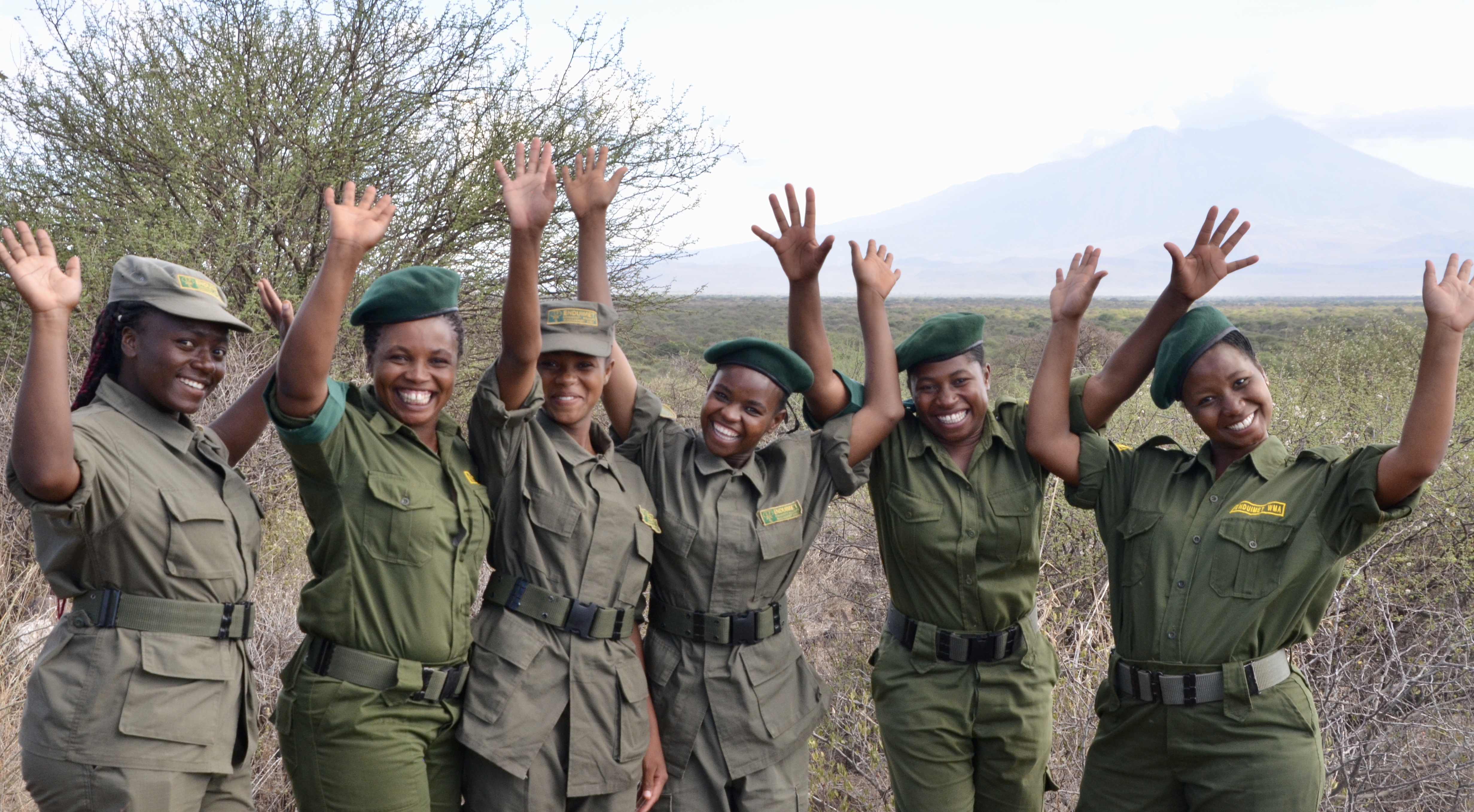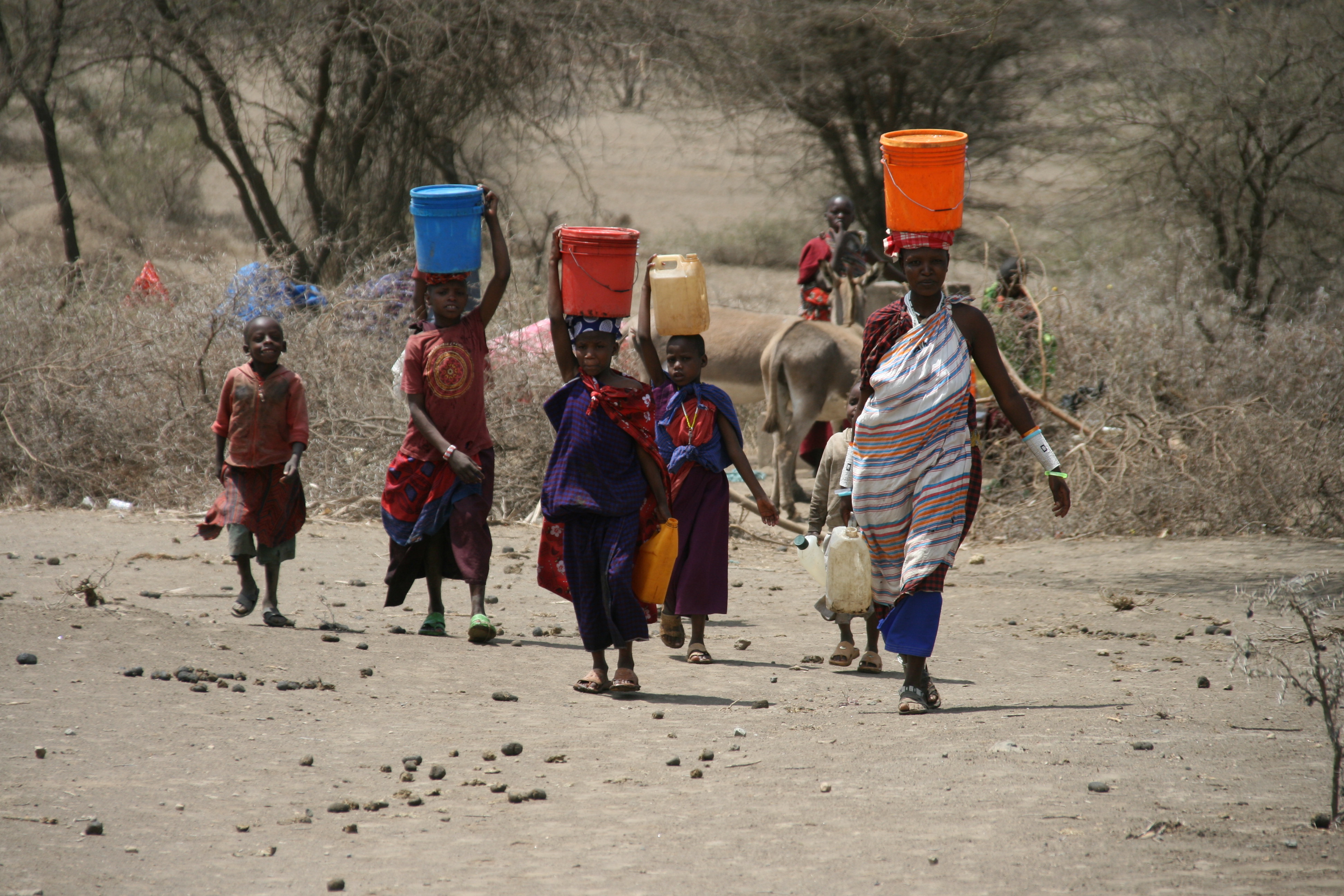A small project in northern Tanzania makes big water gains — and reveals lessons in problem solving, collaboration, and sustainability.
Boasting two national parks, northern Tanzania’s Manyara region is known for an impressive elephant population and an alkaline lake that attracts thousands of pink flamingos. But for the people who call the region home, it is the constant search for water they know best.
In Manyara, pastoralist and agro-pastoralist communities face limited access to permanent water sources. Relying mainly on water accumulated during the rainy season, some people — often women — must still walk for three or more hours to source clean water for their families and livestock. Even then the water might be unsafe or — if sourced from a diesel-powered water pump in a neighboring village — too expensive.
“The natural wells that we were using were not safe and they were endangering the lives of our children and our women,” said Elias Parmelo, village chairman of Kimotorok.
The KISIMA project set out to change that. There are now 40,000 people in Simanjiro and Kiteto districts — an area larger than the country of Rwanda — who have access to clean and drinkable water. ‘Kisima’ means ‘well’ in Kiswahili, and the project addressed the pressing need for water by establishing water schemes equipped with solar pumping systems in nine villages. As a result, access to safe water in Kiteto District increased from 41% in 2018 to 59.8% in June 2022; in Simanjiro District the accessibility increased from 38% to 58.6% during the same time period.
Most importantly for Helena Abraham, a resident of Ndedo village, the time she spends worrying about water has diminished, and the quality of the water she is using has improved: “Now we are fetching water closer to our homes, and we are not forced anymore to fetch water from the ponds, which we usually share with livestock and lead to the spread of waterborne diseases,” Abraham explained.
The KISIMA project, which ran from November 2019 to December 2022, was implemented by Oikos in partnership with Tanzania’s Rural Water Supply and Sanitation Agency (RUWASA), Ujamaa Community Resource Team, and Maji na Maendeleo Dodoma, in collaboration with Kiteto and Simanjiro District Councils and Manyara Regional Secretariat.
Oikos’ approach to sustainable resource conservation is built upon the recognition that communities must first have water security. Within KISIMA — a $2 million Italian Agency for Development and Cooperation-funded water and sanitation project — there are lessons to be learned about problem solving, collaboration, and sustainability.
Finding water
The project wasn’t without its challenges, according to Oikos’ Dario Sbrocca, KISIMA project manager. The first challenge was to find water of good quality — and in enough quantity — to be used for human consumption. “In that area, it’s quite likely to find water with high levels of fluoride, quite salty water,” Sbrocca explained. Additionally, the team initially identified water in some areas, but not enough to develop a water scheme that would ensure a regular supply of water to an entire village.
In some villages, the Oikos team had to get creative. For instance, in the village of Kimotorok, they discovered a soil layer that released salt whenever they attempted to drill deep boreholes. After three attempts at a deep borehole, “we decided to go for a different solution and we developed a large shallow well,” Sbrocca explained.
In the end, the team constructed six water schemes and expanded or rehabilitated three more. Each scheme was integrated with a solar pumping system — although there is a still a diesel option to account for water needs during the dry season, when approximately eight hours of solar-powered operation may not be sufficient to meet high demand for livestock.
A collaborative framework
RUWASA, a specialized rural water agency that operates under Tanzania’s Ministry of Water, was only four months old when the KISIMA project began.
“Everything was new,” Sbrocca explained.
The project came at the right moment, he said, because it entailed infrastructure construction as well as training for RUWASA staff and support for the registration of new community-based water supply organizations at the village level. These village-level organizations are in charge of ensuring operation and maintenance of rural water schemes.
There were growing pains along the way, but KISIMA allowed for the growth of government and community expertise alongside the expansion of water availability: “Because it’s a new agency, in the villages, they were not aware of RUWASA – it took some time. If there was a problem, it was more likely that they were contacting us rather than RUWASA…we had to push to help them understand that we are supporting RUWASA,” Sbrocca said.
The KISIMA project has boosted RUWASA toward its goal of meeting the drinking water needs of 80% of the population in Manyara region before the end of 2025. Through collaboration on the project and the addition of solar pumping systems, RUWASA will now be able to provide water to the villages of Irkiushiobor, Ndedo, Makame, and Ngabolo at a much lower price, according to Stephen Mbaruku, RUWASA manager in Kiteto.
Oikos involved the community in all steps of project design and implementation, “and of course this takes time,” Sbrocca added, stressing that this approach is always worth the effort. “We could have constructed the water schemes in a much shorter time. But to ensure the sustainability —this word that is sometimes overused — you must involve the community.”
One idea that arose as a result of new government agency RUWASA is clustering community-based water supply organizations in geographic proximity and provide each cluster with a technician and accountant in charge — and a motorcycle for them to be able to travel to water pump sites — to ensure strong continued management.
Ensuring sustainability
The KISIMA collaboration with RUWASA has led to an unexpected outcome: the leveraging of incentive programs that will allow Tanzania’s rural water agency and each individual village to generate financial incentives to cover the cost of continued water system maintenance.
RUWASA will be able to leverage almost $3.4 million dollars — more than the budget of the project – from the World Bank’s Programs-for-Results financing instrument, which uses a country’s own institutions and processes and links disbursement of funds to the achievement of specific program results. This outcome “will help RUWASA to ensure the sustainability of the rural water schemes under the responsibility of RUWASA,” explained Johannes Martin, RUWASA manager in Simanjiro.
Oikos has already launched a new project with Carbon Sink Foundation, which will allow each of the nine villages participating in the project to receive between $5,000-6,000 per year generated by carbon credits to help cover the cost of water scheme maintenance. These developments allow Oikos staff to feel confident as the organization closes out the project.
“Sustainability… is not so easy to achieve. You can construct a school or toilets, it’s easy. But to make sure that the teachers are paid or that the toilets are kept clean, it’s another matter,” he said. “In this case I feel happy with the way I am leaving the project.”
Water quality analysis is also expected to improve, following the creation of the first laboratory for water quality analysis in the Manyara region as part of the KISIMA project — an essential step to ensure the access to safe and drinkable water in the longer term. This effort, together with campaigns to promote hygiene and sanitation practices, has already impacted 40,000 people with the potential to impact many more in the future.
Nasinyati Meshack, a member of the community-based water supply organization in Irkiushiobar village, holds regular meetings with the community to discuss ideas to improve upon the systems that have already been built.
“To have a regular supply of water is a big change and brought a huge benefit to our people,” she said.



